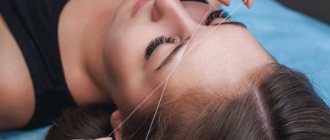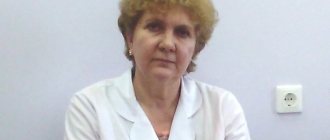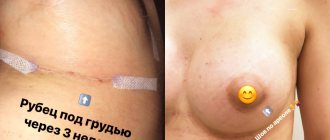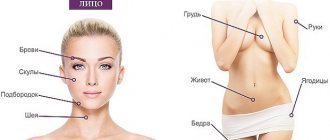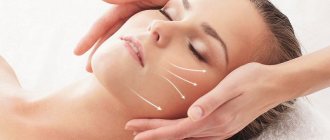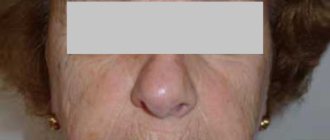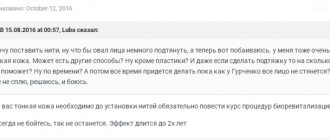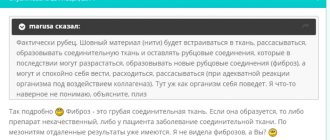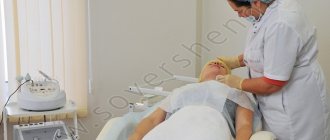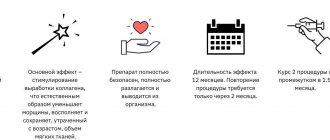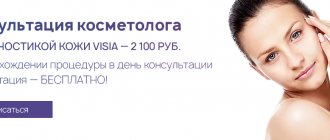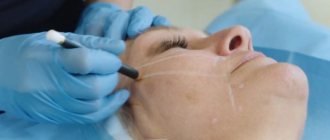The healing of any wound goes through four stages: hemostasis, inflammation, proliferation and maturation. As a result of the healing of especially deep wounds, a scar most often forms. Its severity is influenced by the patient’s genetic characteristics, external influences and the nature of the wound. But on open areas of the body, and especially on the face, the appearance of scars is unacceptable. In this regard, surgeons, when performing manipulations in these areas, use cosmetic sutures. The peculiarity of this type of sutures is the use of absorbable suture material, as well as a specific suturing technique. Read more about the types of cosmetic seams on estet-portal.com in this article.
- Technical features of performing a cosmetic seam
- Caring for cosmetic sutures in the postoperative period
Technical features of performing a cosmetic seam
The main task of a cosmetic seam is to achieve the maximum aesthetic effect. In this regard, to apply this type of sutures, the thinnest threads made of biodegradable materials, as well as atraumatic needles, are used.
When applying a cosmetic suture, the thread should pass intradermally for better adaptation of the wound edge and for less disruption of microcirculation.
The cosmetic suture is applied according to the natural tension lines of the skin, so that the final result on the skin looks like a wrinkle or fold. Cosmetic suture: • main types of cosmetic sutures in surgery; • suture material used for cosmetic sutures; • cosmetic suture care in the postoperative period.
The main types of cosmetic sutures in surgery
In modern surgery, several types of cosmetic sutures are used, among which the most commonly used are: • continuous intradermal suture, which helps to preserve microcirculation as much as possible; • vertical mattress suture - considered cosmetic, since punctures are made as close as possible to the edge of the wound, ensuring minimal trauma to the skin.
Extensive operations with a wide wound require reliable fixation, which a cosmetic suture cannot provide. In this case, preference is given to a stronger surgical suture, and subsequently scar plastic surgery is performed.
Suture material used for cosmetic stitching
Applying a cosmetic suture requires the use of special suture material. Preference is given to atraumatic needles and self-absorbing threads.
Biodegradable suture materials are of organic origin (catgut) and synthetic (MedPHA - threads made on the basis of polyhydroxyacetylic acid).
To reduce trauma to the skin, manufacturers usually apply a film coating of absorbable polymer to threads made of synthetic materials. The main advantage of synthetic suture material is the high reliability of the surgical knot and the strength of the suture.
Skin suture from the general surgeon's point of view
It's no secret that quite often our patients evaluate the quality of the surgeon's work, even after the most complex abdominal interventions, by the appearance of the skin scar. Yes, we do not engage in aesthetic surgery – “surgery of pleasure”; we restore people’s health and, often, life. However, the common phrase that “when you lose your head you don’t cry for hair” is often not enough for today’s overly demanding patients to explain the appearance of a rough, deformed scar on the abdominal wall. And such cases, as we know, are not uncommon. Of course, some wounds heal by secondary intention. But this accounts for no more than 10% of all laparotomies. What's the matter? It may be that we pay significantly less attention to the skin suture at the end of the operation than it deserves. Or we generally entrust its application to novice surgeons: where else can they learn to work with tissue and a needle. The most interesting thing is that, according to fellow plastic surgeons, the skin is a very “grateful” tissue, whose healing is disrupted only by very serious errors in surgical technique. The violation of reparative processes in the skin is understood not so much as its divergence after the removal of sutures (this is an easily removable problem), but rather the occurrence of hypertrophic scars. Hypertrophic scars consist of dense fibrous tissue in the area of damaged skin. They are formed due to excess collagen synthesis. Scars are usually rough, tight, raised above the surface of the skin, have a reddish tint, are hypersensitive and painful, and often cause itching. Hypertrophic scars are divided into two main categories. 1. A normal hypertrophic scar corresponds to the boundaries of the previous wound and never extends beyond the damaged area. The leading role in the development of hypertrophic scars is played by the following factors: large size of the healing wound defect, ischemia of the skin in the suture area, prolonged healing and constant trauma to the scar. After 6–12 months, the scar usually stabilizes, acquires a clear outline, demarcated from the atrophic part of the scar and intact skin, and somewhat decreases and softens. 2. Keloid is a scar that penetrates into the surrounding normal tissues that were not previously involved in the wound process. Unlike hypertrophic scars, keloids often form in functionally inactive areas. Its growth usually begins 1–3 months after epithelization of the wound. The scar continues to enlarge even after 6 months and usually does not shrink or soften. There is typically no parallelism between the severity of the injury and the severity of keloid scars; they can occur even after minor injuries (puncture, insect bite) and often after a IIIA degree burn. Stabilization of the keloid scar usually occurs 2 years after its appearance. It is characteristic that keloid scars almost never ulcerate. The pathogenesis of keloids is unknown. Some authors regard them as benign tumors. Apparently, the most correct idea is that the formation of keloids is caused by a violation of the development of connective tissue. Auto-aggression is possible due to excess content of biologically active substances in tissues. The role of endocrine disorders, individual predisposition to the development of keloids, and the predominance of young and middle-aged patients with such scars cannot be excluded. Hypertrophic scars are difficult to treat. Excision of the scar can lead to its re-development. Injections of steroids into the scar area (and/or injections following excision), as well as close-focus radiation therapy, can prevent scar recurrence.
We in no way call for giving excessive importance to the aesthetic aspects of the skin suture on a laparotomy wound - the main field of activity and manifestation of the skill of abdominal surgeons is hidden from prying eyes. However, in addition to the “substrate for cosmetic effect,” the skin is also part of the surgical wound of the anterior abdominal wall, which requires no less care in forming skin sutures than when suturing the aponeurosis. Moreover, the skin suture does not require some incredibly complex technical and time costs (as they talk about this too often in specialized institutions...).
When forming a skin suture, you should:
- adhere to precision technology with precise comparison of the epidermal and dermal layers;
- strive to evert the edges of the skin; inversion (screwing the edges of the skin into the wound) is unacceptable;
- use minimally traumatic suture material (monofilament or complex threads of size 3/0-0 on an atraumatic cutting or reverse-cutting needle in ½ circle);
- use atraumatic tweezers or single-pronged hooks for skin traction;
— avoid tension of the skin with thread (only apposition and immobilization);
— eliminate cavities and pockets in the subcutaneous fat layer;
- form the suture in such a way that each thread passes through the skin only once, minimizing cross-infection along the entire suture line;
- use removable or absorbable threads;
- do not interfere with the natural drainage of the wound in the first two to three days of the postoperative period;
- leave the minimum possible amount of suture material in the wound.
It should be noted that the presence of some special “cosmetic seam” is just a common misconception. Any skin suture that meets the above requirements can be fully considered cosmetic. Currently, several types of sutures are most common for suturing skin wounds.
A simple interrupted suture is a single suture applied in a vertical plane, most common for apposition and immobilization of the edges of a skin wound, due to the ease of application, hemostatic effect, and the possibility of good adaptation of the wound edges.
The nuances of forming a simple interrupted skin suture include the following mandatory technical points:
— injection and puncture are made strictly perpendicular to the surface of the skin;
- the injection and puncture must be strictly on the same line, perpendicular to the length of the wound;
— the distance from the edge of the wound to the injection site should be 0.5-1 cm, which depends on the depth of the wound and the severity of the tissue layer;
— the thread is carried out to capture the edges, walls and, of course, the bottom of the wound to prevent the formation of cavities in the wound;
- if the depth of the wound is significant and it is impossible to apply a separate suture to the subcutaneous tissue, multi-stitch sutures should be used (for example, Struchkov’s suture);
- the distance between the seams on the skin of the anterior abdominal wall should be 1-1.5 cm; more frequent stitches lead to impaired microcirculation, more rare stitches lead to the appearance of diastasis of the wound edges;
- in order to avoid microcirculatory disorders and unsatisfactory cosmetic effect (transverse lines on the scar), the tightening of the seam should not be excessive, with the formation of a pronounced “roller” over the skin, the thread should only ensure a tight juxtaposition of the skin layers;
— the formed knot should be located on the side of the line of the sutured wound, but not on it.
The McMillen-Donati suture is a single vertical U-shaped interrupted suture with massive capture of the underlying tissue and targeted adaptation of the wound edges. Effectively used for suturing deep wounds with large diastasis of the edges. Apply using a large cutting needle. The injection is made at a distance of 2 cm or more from the edge of the wound, then it is injected so as to capture as much as possible and carried out to the bottom of the wound, where the needle is turned towards the midline of the wound and punctured at its deepest point. Then, on the side of the puncture, along the screed, a few mm from the edge of the wound, the needle is again injected and withdrawn into the thickness of the dermis on the opposite side, the needle is passed in the same way in the opposite direction. When the knot is tightened, homogeneous tissues are juxtaposed. The disadvantages of the seam include an unsatisfactory cosmetic result due to the formation of rough transverse stripes.
A slightly modified version of the McMillen-Donati suture is the Allgower suture, characterized in that the thread is not passed through the surface of the skin on the contralateral side. Single interrupted skin sutures have both advantages and disadvantages. The advantages of single interrupted sutures include their relative simplicity and low time costs for their application, the presence of natural drainage of the cavity of the sutured wound in the first days of the postoperative period through the spaces between the sutures, the possibility of limited opening of the wound when removing one or more sutures. The disadvantages of single sutures include the insufficient cosmetic effect when using them, even if they are formed technically correctly. The fact is that single sutures are removable, and for proper scar formation it is necessary to immobilize the edges of the skin wound for as long as possible. In addition, when forming individual seams, the appearance of transverse stripes or scars at the points of needle insertion is inevitable. Based on the requirements for a cosmetic effect, J. Chassaignac and W. Halstedt proposed the formation of a continuous intradermal suture along the entire length of the wound.
The Chassaignac-Halsted suture is a continuous internal adapting suture. The suture thread passes through the dermis, in a plane parallel to the surface of the skin. The needle is inserted on one side of the incision, passing it only intradermally. After this, they move to the other side of the incision. On both sides, the same amount of dermis is captured into the seam (0.5 - 1 cm). In essence, this seam is a continuous horizontal U-shaped one. At the end of the suture, the needle is poked into the skin, 1 cm away from the corner of the wound. The thread is fixed either with knots directly above the wound, or with special anchor devices.
The formation of the Halstead suture ensures complete adaptation of the epidermal and dermal layers of the skin and, accordingly, the best cosmetic effect. When forming this suture, particularly careful hemostasis is required, preliminary elimination of the residual cavity by suturing the subcutaneous tissue and the absence of skin tension. In the case of a large wound (over 8 cm), theoretically, difficulties may arise when removing a long non-absorbable thread, therefore, when applying such a suture, it is recommended to puncture the surface of the skin every 8 cm in order to be able to subsequently remove the threads in parts.
As already noted, a prerequisite for the use of a continuous intradermal suture is careful comparison of the subcutaneous fat tissue. In addition to the hemostatic effect and prevention of residual cavities, suturing the tissue helps to bring the edges of the skin wound together and makes it possible to apply a skin suture without tension. In this regard, J. Zoltan proposed an improved version of the intradermal suture.
The Halsted-Zoltan suture is a continuous two-row stitch. The first row is applied approximately in the middle of the subcutaneous base, the second - intradermally. The first needle injection is made near the end of the wound, at a distance of 2 cm from one of the edges. Then the needle is injected and punctured alternately in one and the other wall of the wound, passing it only along the middle of the thickness of the subcutaneous tissue in the horizontal plane (continuous U-shaped suture). Having completed the formation of a deep row of seams, the thread is brought to the surface of the skin. Both ends of the thread are pulled, thus bringing the edges of the wound closer together. To form the second row, the tip of the needle is brought into the dermis. Continue to sew in such a way that the puncture and puncture points are located symmetrically relative to the cut line, as with a regular Halsted seam. Until the surface suture is completed, the threads are kept taut, then a knot is formed by tying the ends of the threads to the skin.
An indispensable condition for the formation of a continuous intradermal suture is the use of only a monofilament thread of size 3/0 - 2/0 on a cutting or, better, reverse-cutting needle. The question of the preference for using absorbable (non-removable) or non-absorbable (removable) monofilament thread for a continuous intradermal suture remains open today: some surgeons remain staunch supporters of Prolene, while others invariably use Monocryl.
To achieve the best cosmetic effect, which is largely associated with trauma to the skin when threading, combined methods of closing the skin wound are used. Recently, a method that includes, as one of the components, the use of an adhesive application to immobilize the skin after reduction and protect the wound from exposure to the external environment, has become increasingly popular. In this case, Dermabond is used as a means of immobilization and protection - a medical glue based on 2-ocycyanoacrylate and a violet dye for contrasting with the skin. After application to the skin, Dermabond, due to contact with air, passes from the liquid phase into the elastic-elastic gel phase with exceptionally strong adhesion to the skin within 30-60 seconds. At the same time, a durable film is formed on the skin, preventing diastasis of the wound edges and protecting the edges and walls of the wound from contamination by microorganisms (the use of glue eliminates the need to use aseptic dressings on the postoperative wound). Dermabond provides immobilization of the edges of the skin wound for up to 7-8 days and after this time it independently fragments and is removed from the skin. Mandatory conditions for the use of Dermabond glue are thorough hemostasis and tight closure of the wound edges with a suture of subcutaneous tissue: it is possible to use a continuous suture or separate sutures with absorbable material. That is why this method of closing a skin wound is combined - suture and glue. It can be assumed that the introduction into clinical practice of connecting the edges of a skin wound using an adhesive application in itself indicates the direction of evolution of methods for connecting tissues in surgery: from threads to polymer adhesive materials.
Caring for cosmetic sutures in the postoperative period
Caring for a cosmetic suture in the postoperative period does not differ from that when applying a conventional surgical suture. An important condition for successful healing is compliance with the rules of asepsis and antisepsis, as well as careful treatment of the wound. The bioabsorbable suture material used for this type of suture dissolves itself, which reduces the risk of infection when removing the thread. Also, in the early stages of healing, anti-inflammatory ointments may be recommended, and in a later period, agents that reduce scar formation.
Share:
When are sutures removed after surgery?
The external suture threads are removed no earlier than 7-10 days after surgery . If they are removed earlier, the seam may come apart under load, which can lead to an inflammatory process. During secondary healing, the postoperative suture may take on an ugly appearance. After surgery, some sutures placed on tissues and internal organs remain in the body for the rest of your life. For example, nylon monofilament, being in the tissues of the body, does not dissolve, but does not cause any negative reaction from the tissues of the body.
Medicine and healthComment
